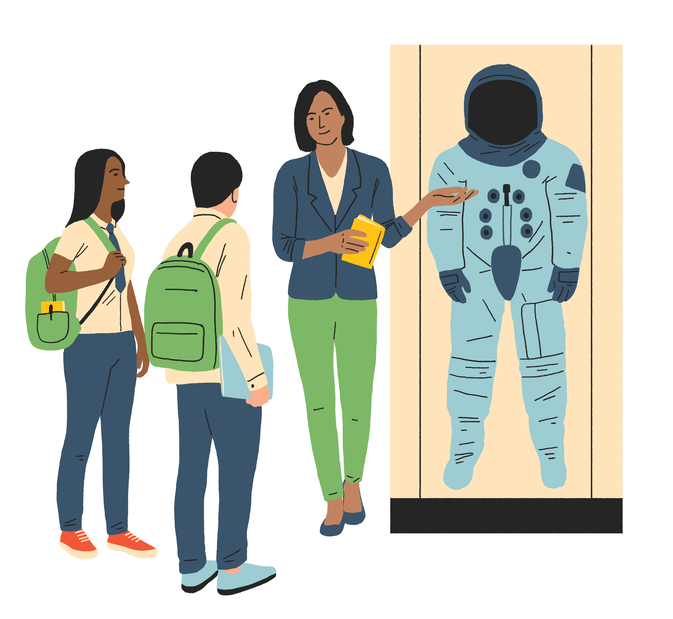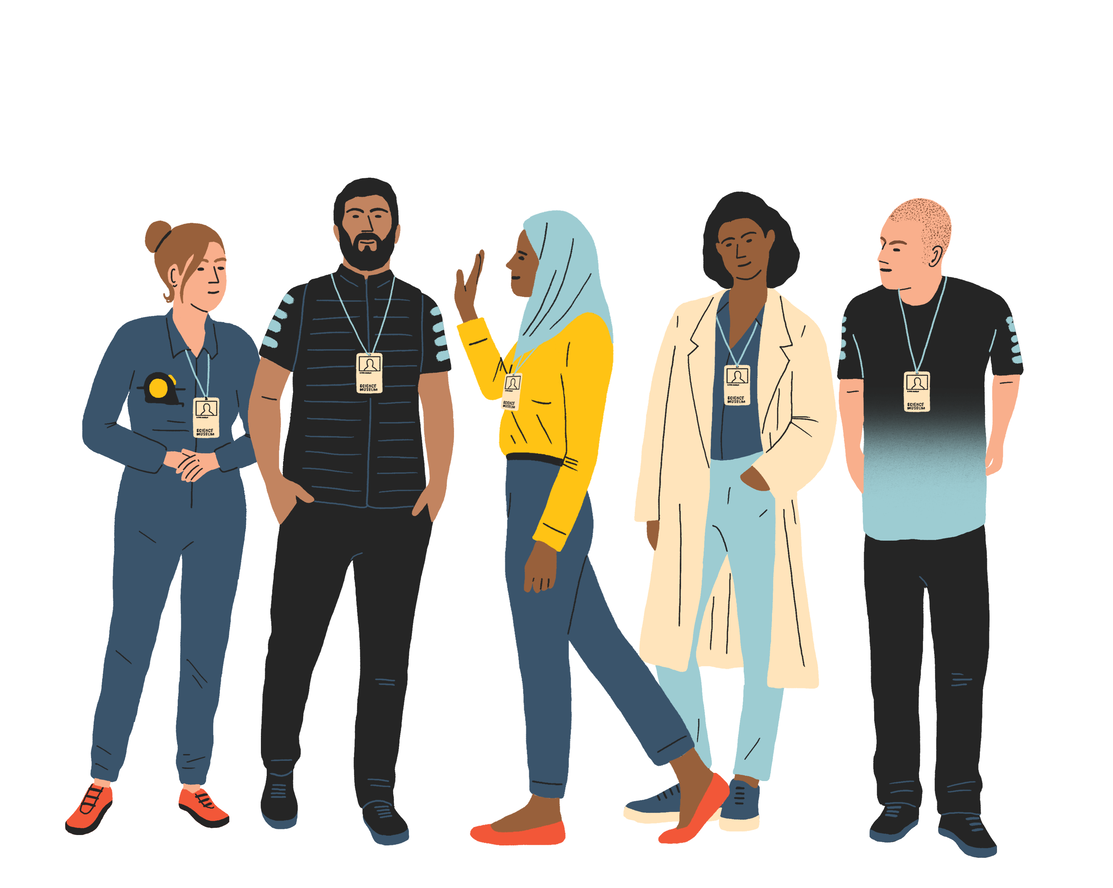A museum visit may not be the first place many people think of to explore and discuss career options, but museums are dynamic spaces which offer lots of inspiring opportunities that can support young people to make well-informed choices about their future careers.
With the opening of the Technicians: The David Sainsbury gallery at the Science Museum, museum visits with a career’s focus have been a motivation for many more groups. In response to this we have been working to inspire and support both schools and community groups to maximise the opportunities of a museum visit to support their careers programmes.
To do this we consulted and worked closely with teachers and careers advisors, alongside drawing from academic and wider research and reports. It has been an interesting and thought-provoking journey and we learned much along the way.
Here we share our experience and top tips for museum (and other spaces) to support schools and other groups to reflect on careers options as part of a visit.
1. Recognise your opportunities
With authentic objects and hands-on experiences, museums are jam packed with inspirational stories of how science, technology, engineering and maths (STEM) have shaped our modern world.
This makes them great places not only to explore and spark discussion about the wide range of people who have used STEM in their jobs and careers, but also to introduce the potential of new and exciting opportunities in, and from, STEM.
2. use careers benchmarks and support schools in meeting them
Reflect on how your museum experiences can support groups to meet the Gatsby careers benchmarks, a statutory framework for good careers information and guidance (we found that benchmarks 4, 5 and 6 are especially relevant).
Provide information for group leaders to use and embed their museum visit into their careers programme. This is particularly helpful where there are opportunities for groups to expand their knowledge and build skills and confidence around future jobs and workplaces, and to link the experience to what students are learning in the classroom.
We created a guide to inspire and share practical ideas for groups leaders on How to explore STEM careers through museums.
3. show where science and maths lead
By connecting the past, present and future of our modern world, museums show how an understanding of STEM – alongside art and design- can improve and transform our everyday lives.
art and design- can improve and transform our everyday lives.
By linking and making connections to curriculum topics and finding examples which are relevant to people’s interests and their lives, you can broaden the perception that science and maths are just subjects earning in school and show that they open doors t many different jobs and opportunities.
4. Show how and where people have shaped STEM
From their passion and inspiration to their hard work and determination, a wide range of people have all played their part in shaping and improving the world around us- and will continue to do so in the future.
Everything we use is the product of hundreds of people, all bringing their own skills and efforts to make things happen.
Showcase stories of the people behind technology and innovations- not just the inventors, but also all the people who make things happen and al the different roles involved in developing technology.
Another resource that we developed was a Technicians Stories activity trail which links some of the ‘people stories’ that are featured in the Technicians gallery with objects from our collections.
5. use the journey of an object
Everything in a museum has been imagined, designed, engineered or manufactured. Every object has travelled a path which involved the input of many different people, with a broad range of knowledge, skills and passion. Highlight all the different processes and stages that are involved in producing these things.
For example, start from how raw materials are extracted and turned into useful materials, continue with how the product was designed and tested, and finally look at how it ended up with its owner or even how it came to be in the museum.
 6. Provide real-life encounters
6. Provide real-life encounters
Nothing beats a real-life encounter and connection with people. Provide as many opportunities as possible for young people to meet and interact to meet and interact with a wide diversity of people doing STEM-related jobs.
This will help you share real-world experiences and broaden perceptions of people who have science-related careers.
By inviting people in from outside to support a museum visit, you can bring in an authentic voice from someone who can talk about their role and everyday work, and how it stemmed from and build on the science and technology that can be found across the museum.
7. Highlight, use develop STEM skills
As society changes, the one constant is that skills and passion that drives progress. Museums hold stories of how work and careers have changed and evolved throughout time.
From communication and creativity to problem-solving and teamwork, highlight the skills which are valuable and transferable to a range of different jobs and careers in and beyond science to help prepare young people for whatever the future holds.
8. Talk about your own jobs, skills and experience

A museum is a vibrant and varied workplace. Every member of staff has an essential role to play in the running of the museum- whether it’s in visitor experience, learning and education, estate management, marketing, media and digital, conservation and curatorial, or creating exhibitions and events.
Welcome and invite groups to ask staff about the role that they play and what skills they use every day. This will give groups insight into the dynamic and creative working environment of a museum.
9. Inspire and imagine a progressive future
Open groups’ eyes to the possibilities and the value of challenging themselves and trying new things that link to their interests, passions and know-how.
Anything is possible with imagination and inspiration- as objects in a museum can testify. What could the future look like? What could be improved? What can be made more efficient or cheaper? There are so many different industry and roles which cross industries (finance and estates teams, for example).
10. Spark meaningful discussions
Design experiences which encourage and spark conversations to support groups to think and talk about careers during and after a visit. did anything they experience align with their interests, skills or personality? Did anything surprise them? Was there anything that they wanted to find out more about?
Allow people to follow their interests and give them choice and control in the activities. You should also give groups opportunities to contribute and share their knowledge and experience, and to ask questions to find out more or follow up at home, with friends or back at school.
Click here to read more of our Sharing Experience on our Science Museum Group Academy pages.
what to read next
If you’ve enjoyed this blog about exploring STEM careers through museums, then here are some related blogs we suggest you read next.